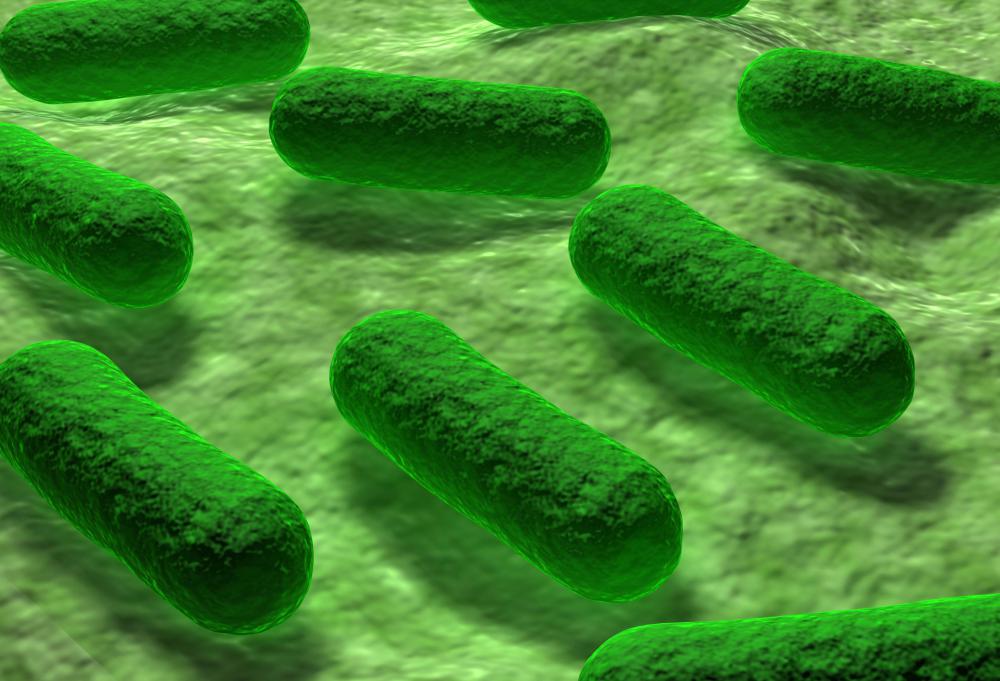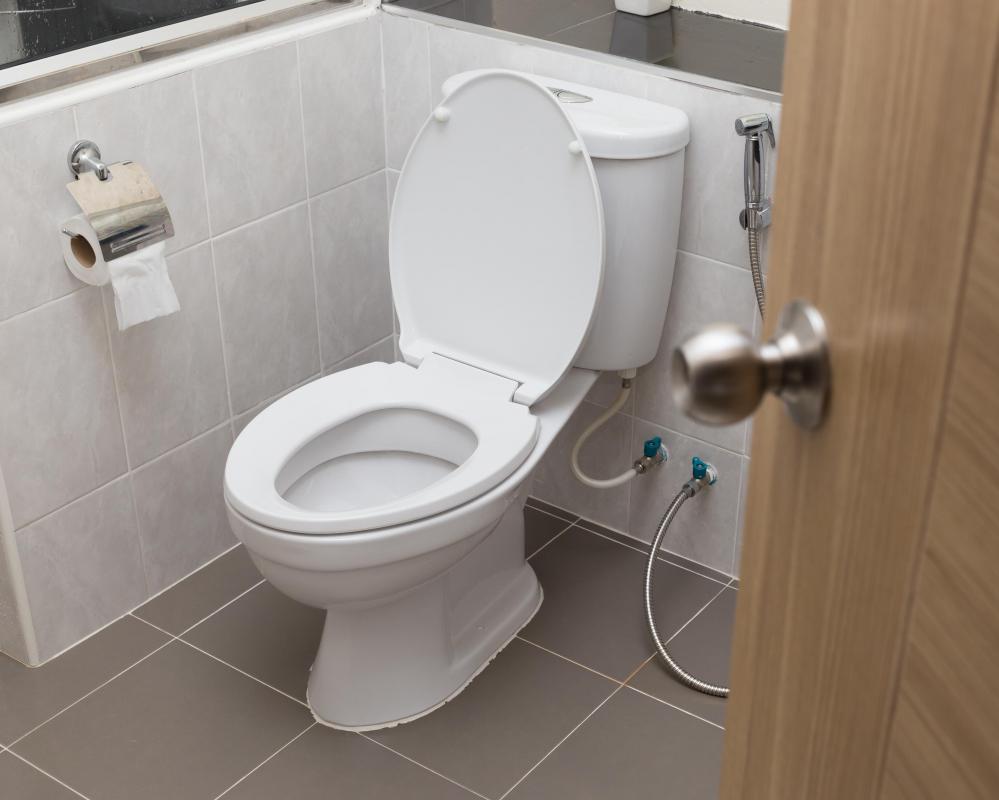At WiseGEEK, we're committed to delivering accurate, trustworthy information. Our expert-authored content is rigorously fact-checked and sourced from credible authorities. Discover how we uphold the highest standards in providing you with reliable knowledge.
What Is Spray Sanitizer?
A spray sanitizer is designed to disinfect surfaces and kill germs. Spray sanitizers can be in aerosol or non-aerosol form. Some types will also kill airborne germs. These spray products are not designed to be primary cleaners, so surfaces should be cleaned before use. Many liquid sanitizers can provide both cleaning and sanitizing benefits.
Clorox® is one company that manufacturers a spray sanitizer for use on hard, non-porous surfaces. Clorox® is designed to kill 99.9% of bacteria or germs including E. coli, Staphylococcus, Streptococcus, and Salmonella. Other sanitizers may also list the exact germs, viruses, bacterias, and fungi that will be eliminated with proper use. Some of these may include viral and bacterial meningitis, Herpes simplex, and strains of influenza.

Kitchen uses of spray sanitizer can include countertops, faucet handles, dish racks, and cutting boards. Doorknobs, light switches, and telephones are also areas that can retain germs. Spraying children’s toys, high chairs, and plastic play surfaces can reduce the spread of some illnesses. Bathroom faucets, toilet seats and flush handles, and the interior or exterior of trash cans can also benefit from sanitizing.

Not all sanitizers are safe for use on all surfaces, however. The product label should be read carefully to determine what the spray is safe for, and how it should be used to obtain the best results. Common information that may be found on labels may include whether the product needs to be wiped or rinsed away after use. Many sanitizers leave no harmful residue and do not require additional steps.

Manufacturer directions differ for individual sanitizer products. Some sprays require that the surface is completely covered in the spray and then allowed to sit for two minutes or longer. After the designated time period, the surface can be wiped with a clean, dry towel. Surfaces that are soiled should be properly cleaned before the sanitizing step. Other products may be dry on contact and work in less than one minute.

An air spray sanitizer can eliminate odors in the air and destroy 99.9% of bacteria. These products may also add fragrance to the air. They are normally safe for use on fabrics, but should be checked for safety around food products. Ozium® is one brand of spray sanitizer that is designed to remove bacteria and odor in the air. It is generally used in a confined space and the benefits should last for several hours.

Ingredients in a spray sanitizer may differ from liquid versions. Surface sprays may contain small amounts of bleach. These should not be used on or near fabrics. Other sanitizers may contain ethanol, denatured ethyl alcohol, or triethylene glycol as the active ingredient.
When choosing a sanitizer, those in the U.S. should look for one that is registered or approved by the Environmental Protection Agency (EPA). The U.S. Department of Health and Human Services advises that sanitizing products should not come in contact with the eyes, and skin contact should be minimized. Users should check that their choice of spray sanitizer is marked as being safe for use around children, food, and pets.
Spray sanitizers may also be available in convenient portable sizes for use as needed while traveling or working. Portable hand sanitizers are most often found in a liquid form, which can be directly dispensed or pumped from a bottle. Hand sanitizers are safe for skin contact, but some users may notice skin dryness after use.
AS FEATURED ON:
AS FEATURED ON:















Discuss this Article
Post your comments